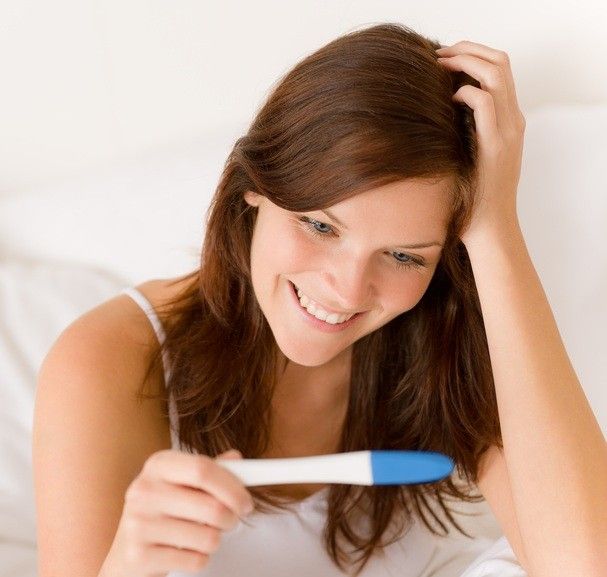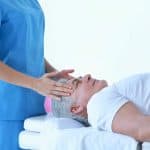

Many people are aware of massage’s benefits for pregnant women, but few realize how valuable massage therapy can be to a woman undergoing fertility treatment. Considering the expense required by today’s infertility programs, the expense of a massage is minimal. Despite its seemingly low cost compared to modern assisted reproductive technologies, massage therapy can be just what the doctor ordered to yield a much wanted pregnancy.
Infertility has continued to rise over the last 10 years, and it is estimated that it affects at least 11 percent of couples of reproductive age. This means that more than 10 million couples in the United States struggle with infertility. Each year, an estimated two million couples seek infertility treatments.
There are many common fertility issues that massage therapy can benefit. Four of the most encountered include:
- PCOS – The number one cause of female infertility, polycystic ovary syndrome (PCOS), is associated with a hormonal imbalance that interferes with ovulation and causes cysts to grow on the ovaries. Massage therapy helps increase circulation to the ovaries, helping to nourish and bring fresh blood to the eggs. This increase in circulation improves the body’s ability to ovulate and menstruate without localized stagnation.
- Blocked Fallopian Tubes – An estimated 40 percent of women with a reproductive dysfunction have a fallopian tube obstruction. Statistics indicate that medical and surgical treatments for blocked fallopian tubes have a low rate of success ranging from 10 to 28 percent. Because it has the ability to break up adhesions that might be impeding movement in the fallopian tubes, abdominal massage can be valuable to these women.
- Endometriosis – When the tissue that normally lines the inside of the uterus is found outside the uterus, it is termed “endometriosis.” Endometrial tissue can irritate structures that it touches, causing pain and adhesions on organs like the uterus, ovaries and bladder. An estimated 30 to 50 percent of infertile women have endometriosis. Massage therapy can help breakup endometrial adhesions, decrease the inflammation, and help the body to rid itself of the old blood left from the endometrial tissues.
- Uterine Fibroids – Non-cancerous clumps of tissue and muscle on the walls of the uterus, uterine fibroids are found in 5 to 10 percent of infertile women. Because massage improves circulation and can break up stagnation, it can help reduce the size of uterine fibroids to make room for a healthy pregnancy.
Massage has another very important role in aiding fertility treatments. Anyone who has ever known someone or personally went through fertility treatments recognizes that the process is one of the most stressful events possible. Fertility treatments typically involve:
- great financial cost (prices can be up to $30,000 or more per month)
- months spent charting a woman’s temperature
- a calendar full of visits to a gynecologist and/or fertility specialist
- repeatedly taking ovulation and pregnancy tests
- injecting or swallowing medications that could cause bruising and wild mood swings
- enduring a variety of other uncomfortable procedures
All of these elements make for a monthly emotional roller coaster ride. This is unfortunate because stress has been shown to interfere with getting pregnant. Although we don’t fully understand the connection between stress and fertility, experts believe that high stress levels confuse the brain’s hormone center – impeding the reproductive hormones from being released regularly. Thus, it makes sense to engage in activities – like massage – that are proven to reduce stress.
In a study published in the January 2004 issue of the International Journal of Neurosciences, researchers found that massage therapy significantly reduced stress. During 10-minute treatments, scientists measured volunteers’ stress levels and heart rates with the help of an EEG, a machine that traces brain waves, and an EKG, an instrument for recording differences in heartbeat. Anxiety and stress levels were substantially decreased in the participants receiving massage.
In a 2012 study published in the Journal of Alternative and Complementary Medicine, researchers found that a 45-minute Swedish massage once or twice a week for a five-week period caused a decrease in levels of the stress hormone cortisol in participants. Because high cortisol levels are known to interfere with fertility, regular massage sessions appear to be logical for boosting the likelihood of pregnancy.
Receiving a massage during fertility treatment may seem to be extravagant, but it can make a big difference in a woman’s chance of conceiving. Massage therapy should be used in all fertility clinics because it:
- can increase circulation to the fallopian tubes, ovaries and uterus
- reduce inflammation and release adhesions that might be impeding conception
- ease emotional tension and induce relaxation
- calm stress-related conditions by engaging the parasympathetic nervous system (rest and digest)
- benefit the endocrine and hormone systems for women with hormone-related problems
Therapists must note that massage techniques intended to increase circulation should be avoided if there is a chance of pregnancy. Vigorous circulation approaches that would benefit PCOS, fallopian tube obstruction, endometriosis and uterine fibroids might prevent an embryo from full implantation. Thus, gentle and relaxation-based treatments should be given during the time frame where conception is possible.
Working with fertility is a relatively new niche for massage therapists, but it can be a rich and rewarding specialty. Reproductive technology is advancing rapidly and is emerging as a highly competitive medical field. As such, anything that increases the odds of achieving a pregnancy is wanted – and is landing a growing number of massage therapists in booming fertility practices.















